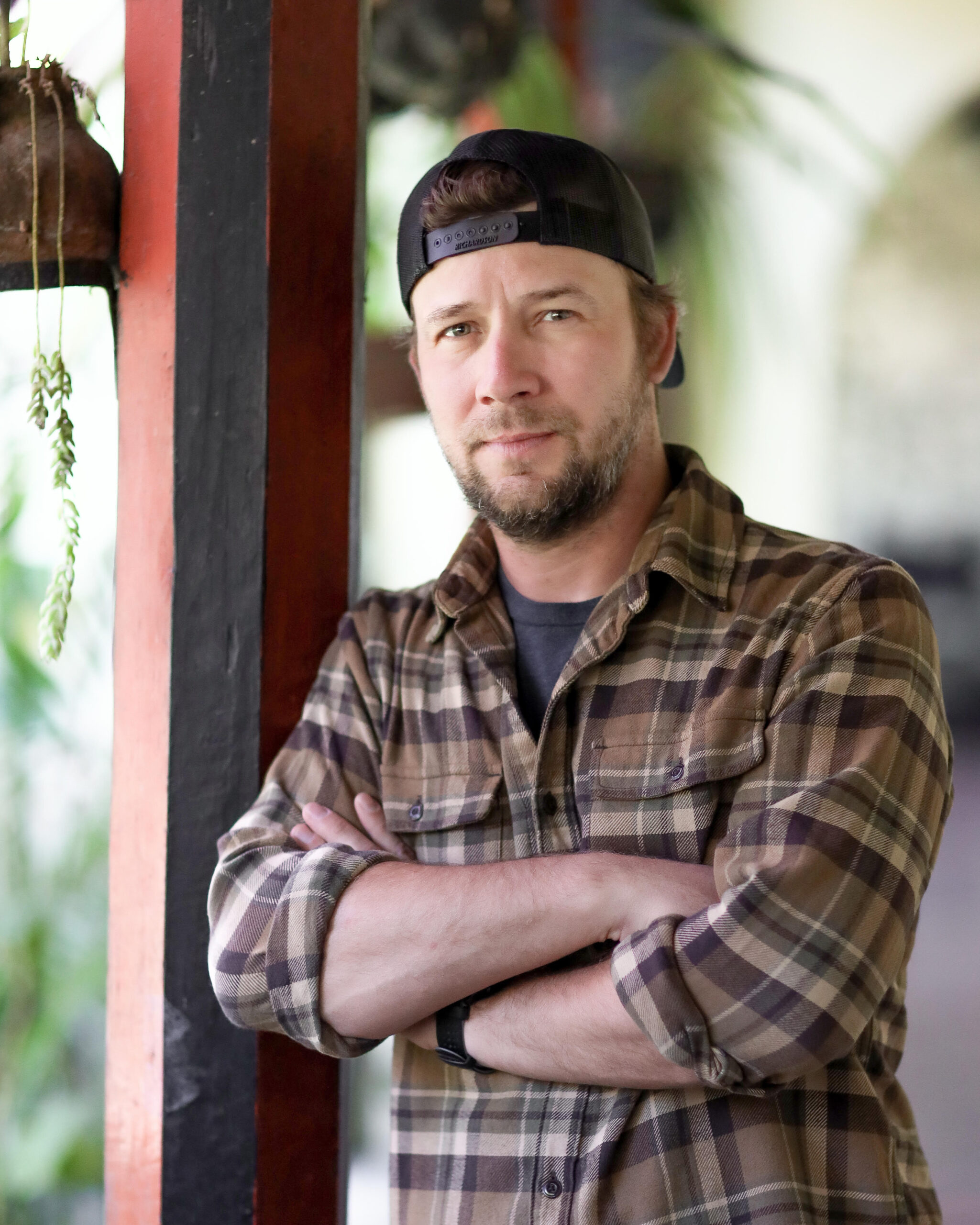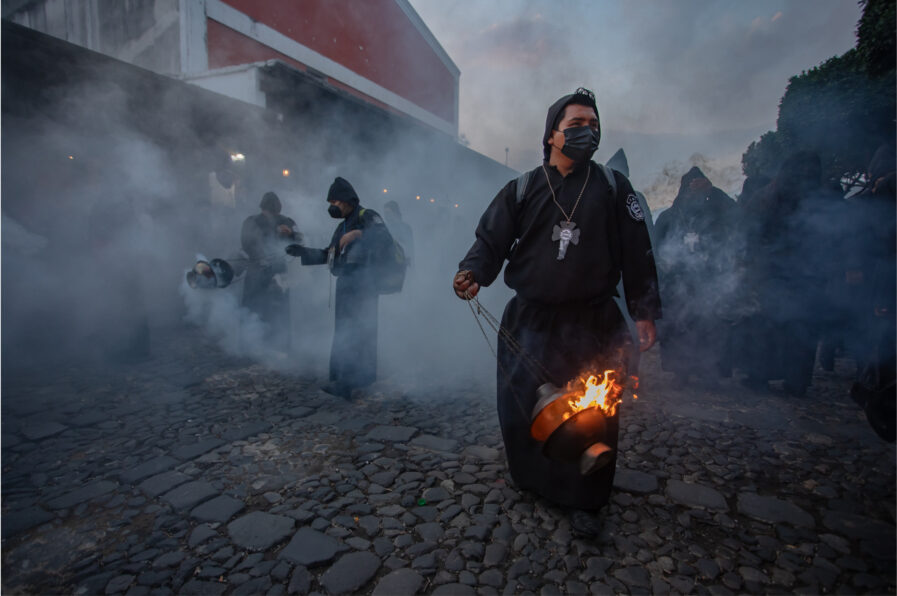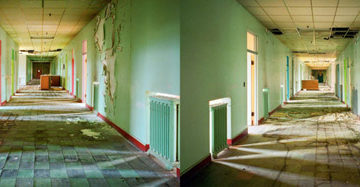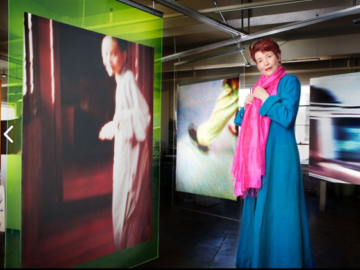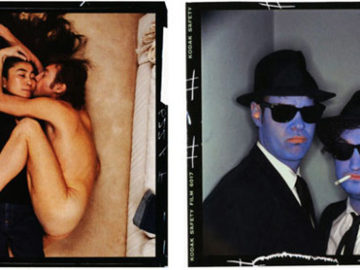Artem Nazarov, a renowned photographer, won a Platinum Award in the Graphis Photography Awards 2024 for his project “Cucuruchos: The Holy Week.” His work captures the spiritual depth of Holy Week in Antigua, Guatemala, where Roman Catholicism blends with indigenous Maya traditions. Drawing on his own experiences, Artem’s photographs vividly showcase the region’s religious rituals and cultural syncretism, earning him acclaim for his powerful visual storytelling.
By: Artem Nazarov, Photographer
Last year, I found myself standing on the cobblestone streets of historic Antigua, Guatemala, mesmerized by the elaborate processions of Semana Santa. The ritual, the devotion of the participants, the rich colors, and the strong, lingering sweetness of incense–it all transported me back to my childhood in a freshly fallen Soviet Union. My father is a documentary photographer, and as newer, more free Russia emerged, he dragged me across the country as he documented the reintegration of the Orthodox Church back into society. Repressed for decades, my father captured the revival of a rich tradition that had been practiced secretly, but with no less devotion, under the Soviet Union. Now a continent and half a lifetime away, I had stumbled upon a similar narrative–religious traditions that thrive….
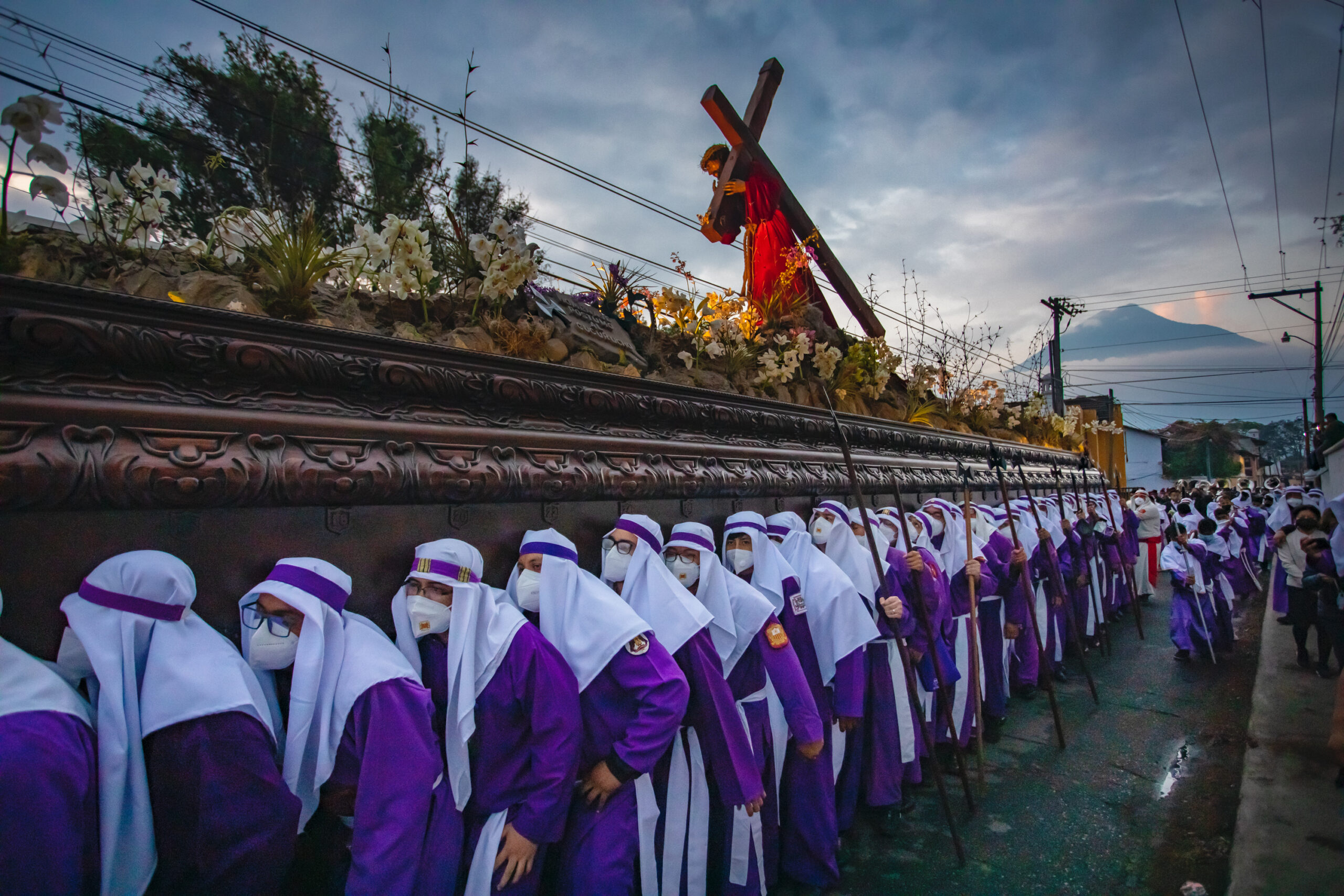
“Cucuruchos: The Holy Week” delves into the elaborately complex religious syncretism that uniquely characterizes this region, where Roman Catholicism blends with centuries-old indigenous practices. Part of a larger project that includes several other countries in Central and South America, Cucuruchos focuses upon the unique blending of Catholicism brought by Spanish colonizers with the traditional Maya beliefs that continue to thrive in Guatemala.
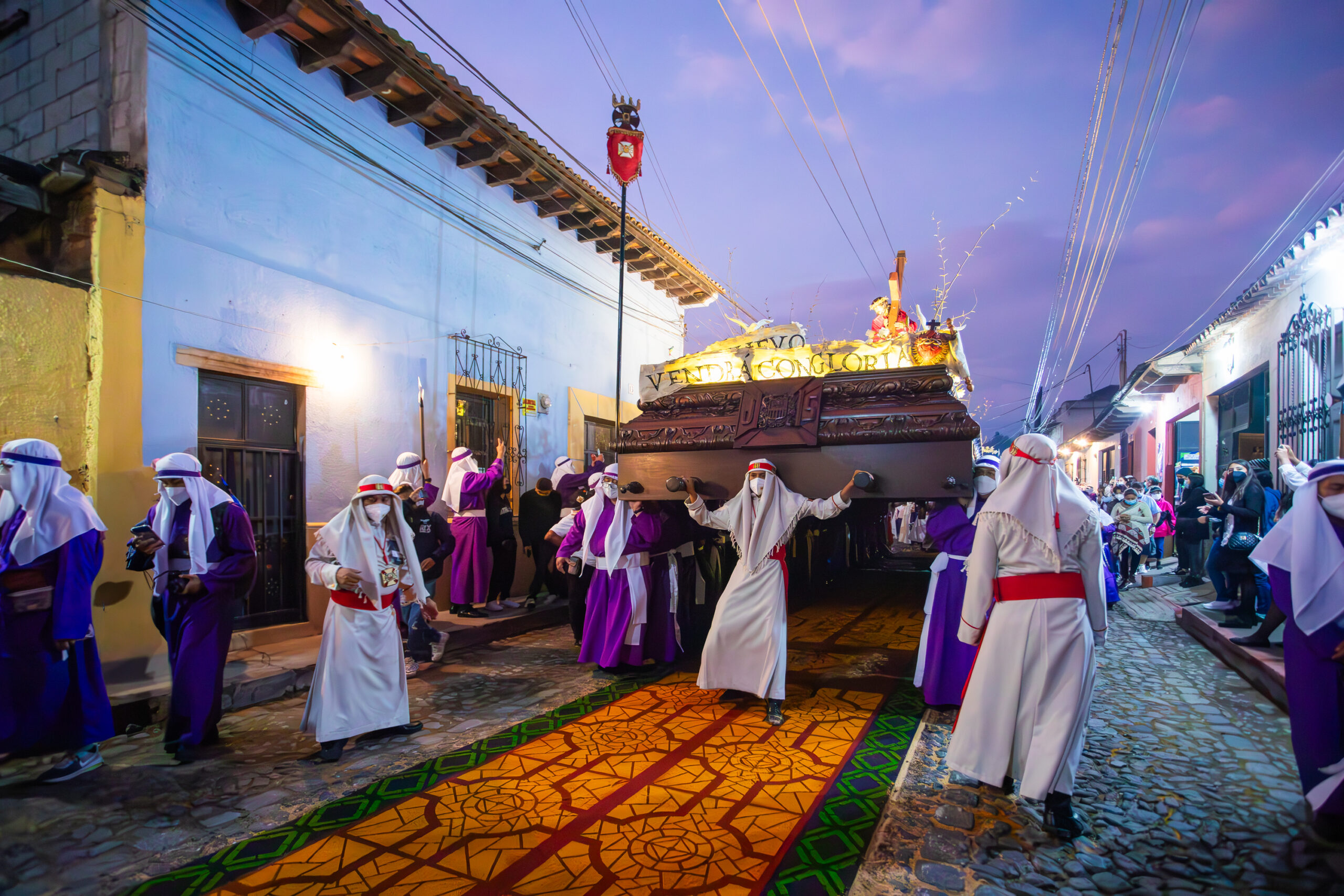
In Antigua, the Cucuruchos are the devout who lead religious processions throughout the city, slowly carrying sacred floats known as Andas over elaborate Alfombras–temporary carpets of colored sawdust adorned with flowers, leaves, and fruits. The Andas feature scenes from the twelve stations of the cross, Jesus’ final days on earth before his crucifixion. Revealed in the Alfombras are traditional Maya beliefs. Delicate depictions of butterflies, an insect that represented the sun and the cyclical nature of life and the afterlife to the Maya, only serve to enrich the underlying theme of the Christian Holy Week–resurrection.
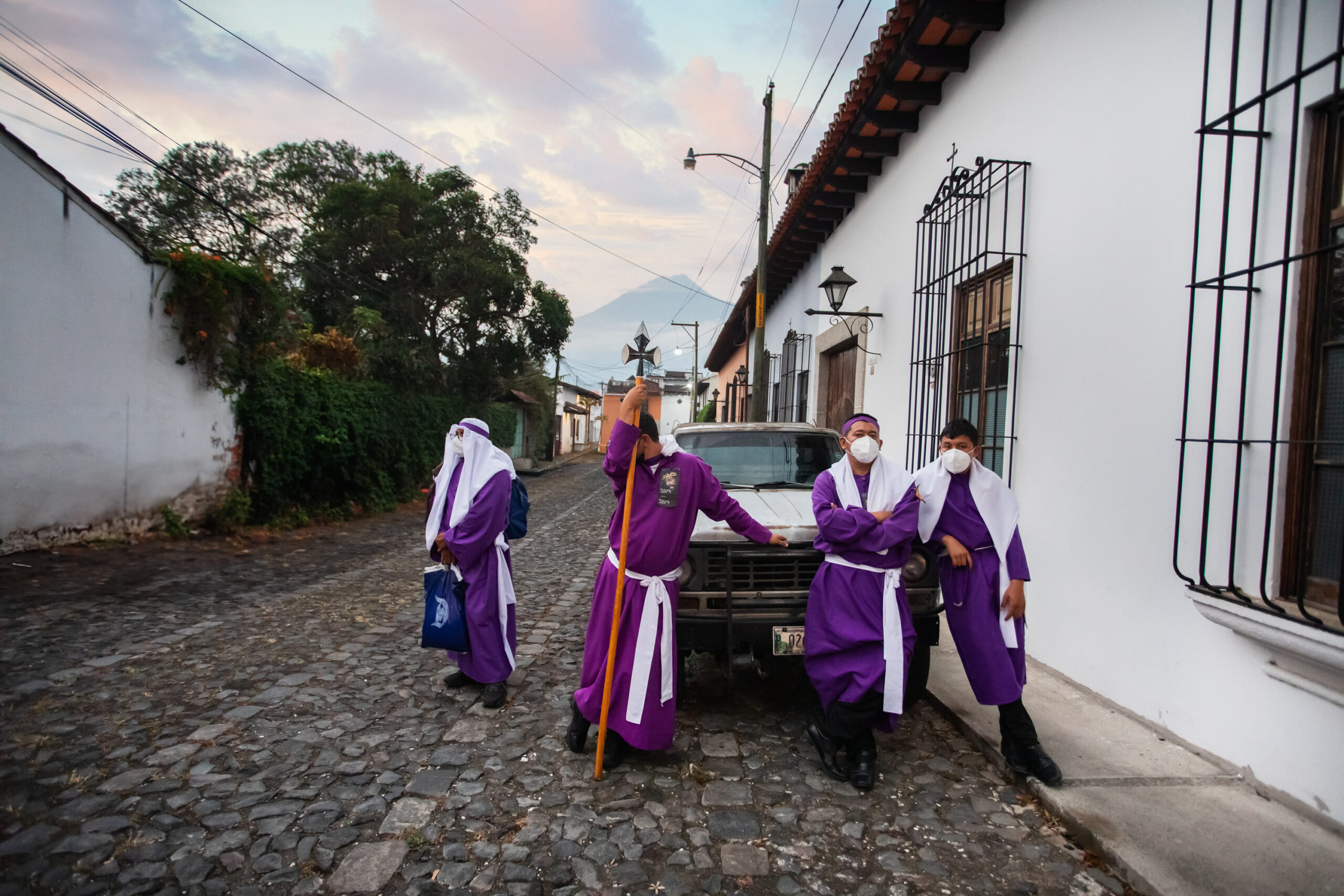
About three hundred miles north of Antigua in the town of San Andres, gateadores slowly crawl from cathedral to cathedral on Good Friday. Known as crawlers, these devotees often wear crowns of thorns and bear heavy crosses upon their backs, symbolizing the arduous journey of Jesus to his crucifixion. This procession of penitents is a widely practiced tradition in the Roman Catholic Church, but the crawling is distinctively unique to San Andres. Before the arrival of the Spanish, the Maya would crawl during rituals of purification. The blending of the two traditions, both rooted in themes of forgiveness, demonstrates the syncretism found throughout the region.
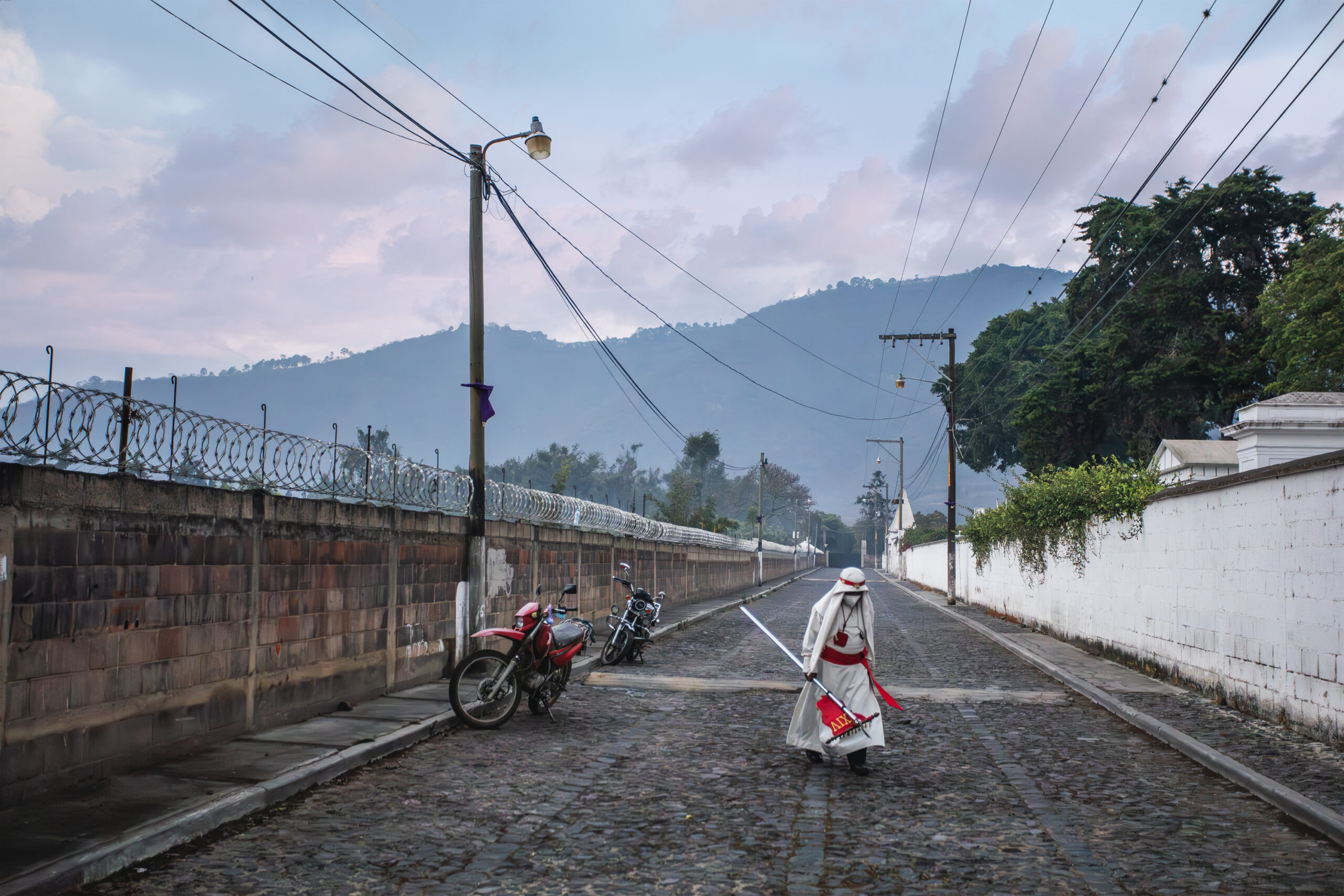
In nearby Santo Tomas, Semana Santa is celebrated in Iglesia de Santo Tomas, a Catholic Church erected by the Spanish in 1545 on the foundation of a Maya temple. Eighteen steps, one for each month of the Maya calendar, are the sole remains of the pre-Columbian structure, which now delivers devout worshippers to a cathedral filled with scenes of the Christian faith. The traditions of the two coexist as Maya priests continue to utilize the church’s foundations for their rituals.
No matter where you go in Latin America, the syncretic religious ceremonies dazzle with their intricate and stunning beauty.
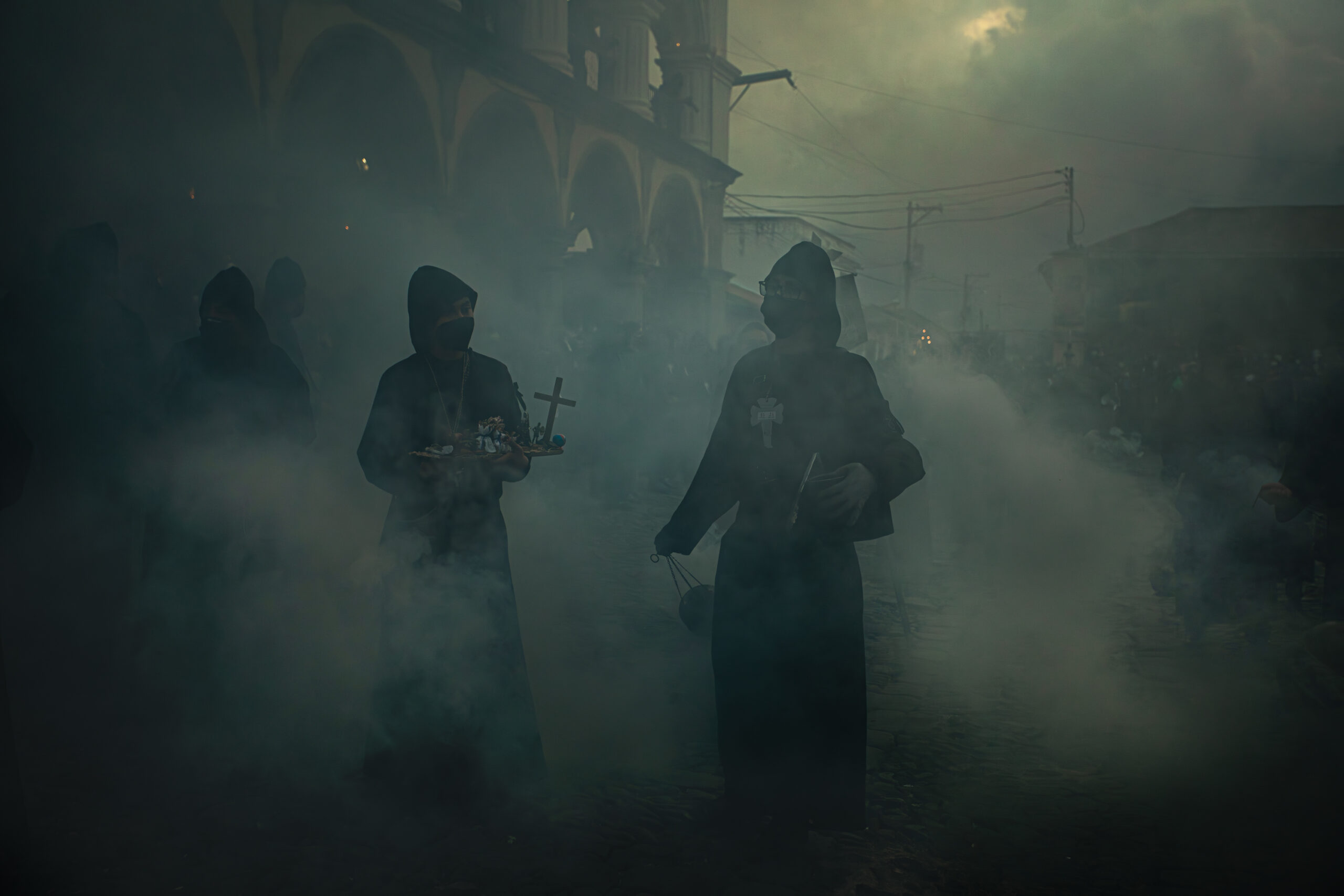
Artem Nazarov grew up in Penza, a small town located in Western Russia. The son of a photographer, he was surrounded by his father’s cameras throughout his childhood and vividly recalls traversing remote Russian villages as his father worked to document the rare wooden churches fortunate enough to survive the Communist era. Gifted his first Canon camera at the age of eight, these early experiences stirred his curiosity about the medium and sparked his passion for visual storytelling.
In 2003, after specializing in intellectual property law at the Moscow School of Social and Economic Science, Artem immigrated to the United States. He relocated to Atlanta in 2008 to continue his education at the Portfolio Center, majoring in photography.
Artem believes that photography is a beautiful way to explore the world and hopes that his work influences others to travel, immersing themselves in other cultures. In each and every locale, he seeks the most authentic experiences of the indigenous population, chronicling their unique customs and conventions. No matter the story, Artem chooses to use Canon gear, continuing the tradition begun by his father decades ago.
Artem teaches visual story-telling at Miami Ad School and is a board member of Good Thinking Atlanta. His work has been recognized by American Photography, Communication Arts, ADDY Awards, Dallas Society of Visual Communication, Graphis, and SEED Awards. Artem’s clients include Coca-Cola, CNN, Getty Images, Google, and The New York Times.
